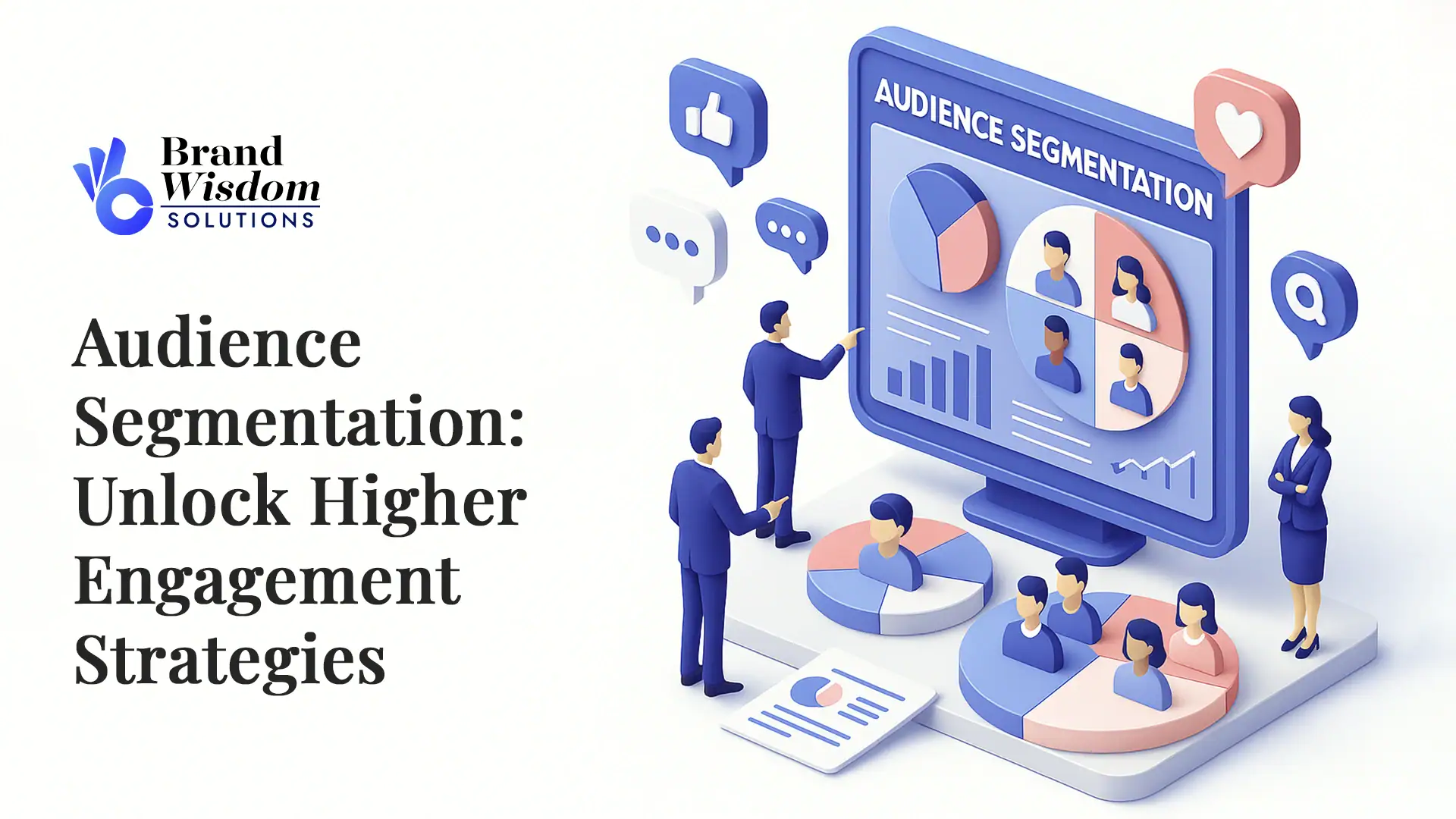Brand Design is an important part of shaping the perception of the audience about a given company. Brand design includes the use of visual elements that can identify a brand through logos, color schemes, and typography. Great brand design not only sets a business apart from the competition but also communicates its values and personality to customers. In a competitive market such as today’s, a scrupulously designed brand is vital for making that strong, unforgettable statement. This blog discusses brand design—one of the key factors in making a brand successful, one that sets it apart from the rest—and offers an insight into how businesses can use design to leave a mark on their target market.
What Is Brand Design?

Components of Brand Design
The elements of brand design are logo, typography, color, and iconography. A logo typically is a graphical identifier to identify a brand that may be in an image, text, or different forms. Typography refers to the fonts and the styles of fonts used universally throughout the brand materials in order to demonstrate the brand identity visually. Colors form an essential part of eliciting emotions and creates a connection with a brand; iconography entails the use of symbols or graphics to help with brand recognition
Crafting a Strong Brand Identity
These are smartly combined by a brand to be able to create an identity that speaks coherently while being very memorable to its target audience. A beautiful logo works in complete visual harmony with well-balanced typography across all touchpoints of the brand. The colors are selected smartly, combined with the values and message of the brand, which is strengthening brand recall and attaching sensibility. The insertion of iconography that resonates with the general design even further strengthens the level of brand identification and creates a strong image.
Importance of Functional Brand Images
Proper brand image creation is a critical activity in creating a strong presence in the market. Basically, it only employs imagery to communicate important messages about a brand. By integrating the brand architecture element in the design process, brands are able to device a method of arranging and expressing their products or services. This reflects clarity as to how brands are presented to consumers, therefore leading to trust and brand loyalty.
The Role of Logos in Brand Design

Creating an Effective Logo
A Logo is a graphic device or symbol of a brand carrying the identity of a company. It is an essential component of brand design and is the brand’s graphic mark. A well-designed logo serves to arouse brand interest and build a strong brand-consumer relationship.
Symbolic brand image is vital for producing brand awareness and subsequently creating brand loyalty. After repeated posting in several places, it modifies to become part of the unconscious mind and pops up within a snap of a moment.
Logo Design Principles
In designing a logo, the aesthetics that will attract the core values of the brand needs consideration. It goes across the choice of color, typography, and overall design, which should syncronize with the message and tastes of the target audience.
That’s to say a logo must be simple but at the same time unforgettable so that one can recognize it well on media. A complicated or too busy logo sometimes ruins the whole brand message and often remains unnoticeable to the eyes of the target audience.
Elements of Effective Logo Design
The psychology of color is a very important aspect of logo designing, as different colors connote different forms of emotions and associations. As such, a brand can design a logo that evokes particular responses from consumers based on the understanding of the psychological impacts of colors. Typography is another crucial factor in logo designing. The choice of fonts can positively or negatively alter the perception of the message by a brand. The fonts should also show the personality of the brand, whether it is bold and modern or elegant and traditional.
Typography and Brand Perception

Selection of Typography
Typography plays an integral role in the perception of a brand. The fonts used under the visual identity significantly impact the way a brand is perceived by the consumers. Different typefaces can evoke quite extreme emotions, setting associations, which influences how people relate themselves to a particular brand.
This essentially begs to implore the consideration of personality and target demographic when choosing typefaces since they sport various personalities. For example, taking the use of serif fonts, it gives off feelings of tradition, reliability, and respectability and maybe more inclined to brands which want to purport an image of heritage.
Effects on Brand Image
The right typography can help to evoke positive brand images in the minds of consumers. The brands with which uniform typography is carried across marketing material and products have a more solid, integral visual identity. This kind of visual consistency reinforces memorable brand identity and makes it easier for consumers to recognize and remember the brand.
This can also be furthered by influential brand imagery through typography to establish brand credibility and trust. Consumers are more likely to have a positive perception of a brand if they encounter a brand with appropriate meaningful and relevant typefaces that can support the values and messaging of the brand.
Typeface Guidelines
This calls for a number of guidelines in order for typography to allow the expression of the brand’s personality. First off is legibility. On all media, the fonts used should easily read while at the same time communicating the message intended.
The second aspect that creates cohesiveness helps to deliver a unified brand presence, succeeds with brand images through consistent typography, and reinforces identity. Through the use of identical fonts at all touchpoints, brands will have established a cohesive visual language that reinforces their identity.
Finally, there is a need for flexibility. The font selected is one whose use is flexible to use both on and offsite platforms and still maintains the intent. One should have impactful chosen fonts, whether for digital or print content for greater legibility.
Impact on Consumer Perception
Many times, consumers form an opinion about the brand based on its visual elements—typography. A brand that possesses memorable typography stands in the minds of consumers and stands out amongst a cluttered marketplace.
The Psychology of Color in Branding

Color Theory
Brand designing incorporates an important element of color theory, which can influence consumers’ perception and behavior towards brands. The ability to understand the psychology of colors can enable a business to define memorable and influential for brand strategies. Colors bring out feelings and associations that form a certain kind of consumer behavior and perception of a brand.
Impact on Consumer Behavior
Color selection for any brand can have a very strong impact on consumer behavior. For example, red and orange are warm colors that give rise to emotions like excitement, passion, or energy. In contrast, cool colors, of which blue and green are the most common examples, denote aspects of calmness, trust, and serenity. Organizations utilize these colors in order to identify specific principles with which they then convey the values they respect to their audience through proper branding strategies.
Emotions and Audience Connection
Colors have a way of stimulating emotions and bonds; hence, they can establish potent emotional connections with various segments. For instance, bright and loud colors would better make a brand targeting young people to represent traits such as youthfulness and creativity. On the other hand, sophisticated colors like black and gold are often used by luxury brands to convey elegance and exclusiveness. By applying colors that correspond to the taste and sentiment of their target audience, brands will be able to compose an irresistible identity for consumers.
Iconography and Visual Storytelling

Simplifying Information
Icons in brand designing greatly help in simplifying information for ease of understanding. They are visual cues that simply and instantaneously transfer information across to the viewer. When effectively used, icons can enhance user experience and make brands more memorable.
In brand design, icons are almost a universal language that can bypass the problem of literacy and language. They can express ideas and concepts very briefly but strongly. Through the use of icons, companies can easily come up with a visual identity consistent for their brand, which will go well with their target audience.
Unique Icon Design
A designer in the pursuit of making distinguished icons that will enhance brand narrative must focus on simplicity and clarity. The best icons are those which one look can recognize and tell apart, thus remaining in the memory of the consumer. One should strike a balance between creativity and practicality when coming up with icons for branding purposes.
One of the ways to create absolutely original icons is by using their elements in your branding. It means that applying colors, shapes, or symbols attributed to this brand, a designer demonstrates brand identity in an icon. That’s why consistency in icon design definitely will create the clear visuality of this image and let all the parts of it express one idea and slogan.
Developing a Tagline that Resonates

Powerful Messaging
A memorable tagline is important in brand communication because it delivers only a short, potent message that sums up the essence of a brand. A well-penned tagline can create a long-lasting impression on consumers’ minds and identifiably connect with a brand.
A good tagline is one that not only touches the sentimental chords of its target audience but also aligns with their values and aspirations. Playing on the emotions and aspirations of customers is bound to produce a very effective tagline for small businesses. For example, take the case of a “Empowering Dreams” tagline for hopscotch equipment. It plays on the fun part of their product but also conveys the idea of enabling big dreams for kids. Brand values are reinforced.
Reinforcing Brand Values
An effective tagline needs to turn heads, and on a deeper level, help reinforce key brand values. It will fall into line with the mission, vision, and USP of a brand, and is especially important for small businesses in differentiating them from competition and building brand loyalty.
To make a tagline, a small business needs to work on two tenets: authenticity and clarity. A tagline is just like looking into a mirror of the values and the basis of what the brand can offer its customers. Creating trust and credibility is rooted in the belief in staying true to values and being consistent in the message that small businesses undertake.
Engaging with Iconography
Even more powerful is adding visual elements—like in the iconography section—to really drive home a tagline. This could be colors, fonts, or imagery that provide a visual cue to support the messaging of the tagline for an overall brand identity that consumers can respond to.
Brand Voice Development

Consistent Tone
Tone of voice is the central setting in brand communication, which creates a strong brand character that ensures recognition from the audience. By sticking to an exclusively picked tone, it would foster trust and drive recognition.
The consistency should be ascertainable through the creation of a style guide that lays down guidelines for language, messaging, and most importantly, communication. This helps in being a reference point to all content creators so that the brand voice remains cohesive and recognizable.
Defining Brand Voice
A brand voice is defined by its personality, values, and clear visibility into who the target audience is. A brand needs to conduct market research to find out what is important for the audience and what they might expect from it. This information shapes the brand voice in accordance with what works with its most preferred demographic.
This will also take into consideration the emotional impact of the communication while defining the brand voice. Brands are to reflect certain emotions driven from their values and resonate with their audience. By putting those emotional elements into their communication, brands can really bring about a much more engaging and memorable brand experience.
Alignment Maintenance
This will definitely keep the brand voice and brand personality perfectly in line. It will help in building a strong personal branding strategy. Brands need to come back once in a while to update their brand voice, so that it remains relevant and resonates with the audience.
It is one of the many ways in which a brand seeks feedback from customers and other stakeholders to ensure it stays aligned. Brands can align their brand voice simply by paying attention to others and adjusting accordingly. In this way, they will be certain about meeting the audiences’ expectations and staying true to its core value.
Brand Positioning and Differentiation in the Marketplace

Positioning Strategies
Brand positioning is essential in a competitive market if a business aims at standing distinct from its rivals. Companies that have well-defined value propositions are better at targeting their audiences.
Brand positioning can be successful if the company does market research, analyzes competitor strategies, and identifies consumer preference so as to bring out the brand identity that best suits target markets.
Design Elements of Brand Differentiation
Notably, design elements are equally important in brand marketing, for they distinguish one brand from another. Logos, colors, typography, and even the way products are packaged play a role in building brand identity.
Of greater importance, however, is the consistency of branding at each touchpoint that would facilitate memorable brand experiences for consumers. This consistency will tie the values for the brand and lead to brand loyalty with customers.
Branding Opportunities
Effective branding techniques exploit the available branding opportunities to extend awareness and visibility. Through various channels, including social media, advertising, and licensing, the brands are more likely to reach out to the people.
Brand image creation is the combination of telling a story that creates an emotional connect with the consumer. This emotional resonance leads to brand awareness and brand loyalty over a period of time.
Process of Creating a Brand Design

Research Phase
In branding, the very initial process involved is extensive research. Research about the target audience, competitors, and market trends allows an insight into what the goal is, and therefore the necessary direction for a design can be set.
Conceptualization and Development of Designs
Conceptualization is the process whereby research data gathered is used to brainstorm ideas, create mood boards, and develop initial designs based on the research findings.
Conceptualization
- Brainstorm creative ideas and conceptualize
- Mood boards define design elements
- Preliminary design concepts for feedback and refinement
- Design development then follows this step, whereby the chosen concept gets refined into visual elements: logos, color schemes, typography, imagery, etc.
Implementation and Testing
The design elements are taken forward for implementation across various touchpoints such as marketing collaterals, websites, packaging, and social media platforms only after finalization. Testing the design through these will help assess the consistency and effectiveness of communication of the brand message across these touchpoints.
Implementation:
- Application of the brand design to various media
- Visual identity consistency across platforms
- Testing for user response and brand perception
- Testing enables one to note any inconsistencies or changes that should be done before finalizing the brand design.
Alignment of Business Goals and Market Research
Brand designing should be aligned with business goals so that it offers values of the brand with respect to achieving its objectives. Incorporating market research in a design allows for the creation of design that appeals to the target audience.
Alignment:
- Ensuring brand design reflects core business values
- Bring insights from market research for relevance
- Establish visible linkage between design elements and business objectives.
Conclusion
Brand designing is an incredibly important aspect in the influence of consumer perception and engendering brand loyalty. Knowing the intricacies of what goes into effective brand design—from logos to typography, color psychology to brand voice—is critical in establishing a cohesive brand identity with impact. Moving to the nitty-gritty of brand design, businesses acquire strategic positioning in the market, separate themselves from competition, and foster an emotional bond between their brands and their target audience. Most importantly, a compelling brand design is one that combines creativity, strategy, and a profound understanding of consumer behavior in a measured way.
Frequently Asked Questions
What is brand design?
Brand design involves creating visual elements and messaging that represent a company’s identity. It includes designing logos, choosing colors, and crafting a brand voice to communicate the brand’s values and personality effectively.
How important are logos in brand design?
Logos play a crucial role in brand designing as they are often the first visual element that customers associate with a brand. A well-designed logo can help create brand recognition, convey professionalism, and differentiate a company from its competitors.
Why does typography matter in brand perception?
Typography influences how customers perceive a brand’s personality and message. The choice of fonts can convey different emotions, establish brand consistency, and enhance readability across various marketing materials, contributing to a cohesive brand identity.
How does color psychology impact branding?
Color psychology studies how colors affect human emotions and behavior. In branding, colors evoke specific feelings and associations that can influence consumers’ perceptions of a brand. Choosing the right colors can help create a strong emotional connection and enhance brand recognition.
What is the significance of developing a brand voice?
Developing a brand voice involves defining the tone, style, and language that reflects a brand’s values and resonates with its target audience. A consistent brand voice helps build trust, establish authenticity, and create a memorable brand experience for customers.





